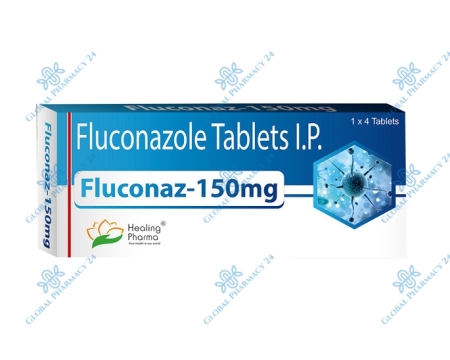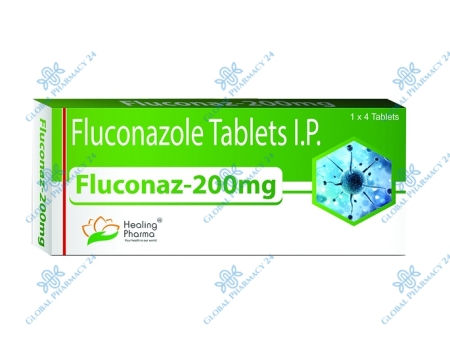| Feature | Description |
|---|---|
| Active Ingredient | Fluconazole |
| Dosage Forms | Capsules, Oral Suspension, Injection |
| Common Dosage | 150 mg for vaginal infections, varies for other infections |
| Duration of Effect | Depends on infection severity, usually begins within 1-2 days |
| Primary Use | Treatment of fungal infections |
Beginning the Fluconazole Journey
Embarking on the Fluconazole journey marks the start of a targeted fight against fungal infections. Fluconazole, a potent antifungal medication, is designed to combat a wide range of fungal pathogens, offering a beacon of hope for patients struggling with infections. This journey is not just about treating an infection but understanding how Fluconazole integrates into your healthcare regimen to provide effective relief.
As we delve deeper into the specifics of Fluconazole, it becomes evident that its significance lies beyond just its antifungal properties. The medication's ability to penetrate the body's tissues and fluids makes it a critical option for severe and potentially life-threatening fungal infections. Understanding its comprehensive role in managing health is crucial for patients and healthcare providers alike.
What is Fluconazole?
Fluconazole is a first-line antifungal medication known for its efficacy against a plethora of fungal infections. Belonging to the triazole class of antifungal agents, it works by inhibiting the fungal cytochrome P450 enzyme, essential for the synthesis of ergosterol, a key component of fungal cell membranes.
Unpacking the Article
This article serves as a detailed guide, unfolding the layers of Fluconazole’s usage, from its chemical composition to its practical application in medical treatments. It aims to enlighten patients and healthcare professionals about its multifaceted role in the pharmaceutical realm.
Diving Deeper into Fluconazole
Understanding Fluconazole's intricacies provides a deeper appreciation of its role in antifungal therapy. Its chemical structure and formulation contribute to its effectiveness and versatility in treating fungal infections. The exploration of its makeup reveals why Fluconazole stands out among antifungal treatments.
The medication's design and packaging are as critical as its active ingredient. Proper packaging ensures the stability and integrity of Fluconazole, maintaining its efficacy from production to administration. This section unveils the thoughtful considerations behind Fluconazole's presentation.
The Make-Up of Fluconazole
Fluconazole's composition is tailored to maximize its absorption and bioavailability. Its ability to cross the blood-brain barrier makes it effective in treating systemic and life-threatening fungal infections, such as meningitis caused by fungi.
Unveiling Fluconazole’s Active Ingredient
The active ingredient, Fluconazole, is potent against a broad spectrum of fungi, highlighting its significance in antifungal pharmacotherapy.
The Chemistry Behind Fluconazole
Fluconazole's chemical structure enables it to inhibit fungal enzymes effectively, disrupting cell membrane formation and leading to fungal cell death.
Unboxing Fluconazole
The packaging of Fluconazole is designed to protect its potency, ensuring that the medication remains effective until its expiration date.
The Role of Packaging
Protective packaging is crucial for preserving Fluconazole's efficacy, safeguarding it against environmental factors such as moisture and light.
How Fluconazole Impacts Your Health
Fluconazole’s impact on health extends beyond its antifungal properties. Its targeted action against fungal cells minimizes the infection's spread, promoting a swift recovery. Understanding how it works and the best practices for its use are key to maximizing its benefits while minimizing risks.
Proper usage, including adherence to dosing guidelines and awareness of potential interactions, ensures that Fluconazole's benefits are realized. This section focuses on optimizing treatment outcomes through informed use and precautionary measures.
How Fluconazole Works
Fluconazole targets the fungal enzyme necessary for cell membrane integrity, leading to the effective eradication of fungal cells without harming human cells.
The Dos and Don’ts of Fluconazole Dosage
Adhering to prescribed dosages is crucial for the efficacy of Fluconazole, avoiding underdosing or overdosing to prevent resistance or adverse effects.
A Step-by-Step Guide to Using Fluconazole
Starting with the correct dosage, patients should follow a consistent schedule, taking Fluconazole with or without food based on medical advice.
Precautionary Measures While Using Fluconazole
Patients should be aware of potential interactions with other medications and avoid alcohol to minimize the risk of adverse effects.
Weighing the Pros and Cons of Fluconazole
- Pros:
- Effective against a wide range of fungal infections.
- Can be administered orally or intravenously, offering flexibility in treatment.
- Generally well-tolerated with a low incidence of serious side effects.
- Cons:
- Potential for liver toxicity, requiring monitoring of liver function tests.
- Can interact with numerous other medications, necessitating careful management.
- Risk of rare but serious skin reactions.
Staying Safe with Fluconazole
Navigating the use of Fluconazole with an understanding of its potential side effects and interactions is key to a safe treatment journey. Awareness and proactive management of these aspects can significantly enhance treatment safety and effectiveness.
Implementing precautionary measures and monitoring for adverse effects are crucial steps in mitigating risks associated with Fluconazole use. This section provides insights into safely managing and maximizing the benefits of Fluconazole treatment.
Navigating the Side Effects
While Fluconazole is generally safe, being informed about possible side effects enables patients to seek timely medical attention if necessary.
Common vs. Rare Side Effects
Common side effects include nausea and headaches, whereas rare side effects might include severe skin reactions and liver damage.
Dealing with Side Effects
Most side effects are manageable and may resolve with time; however, persistent or severe symptoms require medical consultation.
Managing Drug Interactions
Fluconazole's interaction with other drugs can alter its efficacy or increase the risk of adverse effects, emphasizing the need for careful medication management.
Potential Drug Interactions
Key interactions include those with blood thinners, certain antidiabetic drugs, and other antifungals, necessitating adjustments to treatment regimens.
Tips to Prevent Adverse Interactions
Patients should inform their healthcare providers about all medications they are taking to avoid harmful interactions.
Wrapping Up
Fluconazole represents a critical tool in the management of fungal infections, offering effective treatment across a spectrum of conditions. Its role in antifungal therapy is underscored by its efficacy, safety profile, and the importance of informed and cautious use.
As we conclude our exploration of Fluconazole, it's clear that the medication's benefits can be maximized through adherence to prescribed guidelines, awareness of potential side effects, and proactive management of interactions. Fluconazole, when used appropriately, can be a cornerstone of effective antifungal therapy.
Reflecting on Fluconazole
Fluconazole's journey from a chemical compound to a key player in antifungal treatment highlights its importance in modern medicine. Its broad applicability and effectiveness make it an invaluable resource for patients and healthcare providers alike.
Last Words on Fluconazole
The comprehensive guide to Fluconazole underscores the medication's significance in combating fungal infections. By navigating its use with care and informed judgment, patients and practitioners can harness its full potential for effective and safe fungal infection management.
FAQs Fluconazole
What is Fluconazole?
Fluconazole is an antifungal medication used to treat various fungal infections such as yeast infections, thrush, and cryptococcal meningitis.
How does Fluconazole work?
Fluconazole works by inhibiting the growth of fungi. It interferes with the formation of the fungal cell membrane, ultimately leading to the death of the fungus.
What conditions does Fluconazole treat?
Fluconazole is commonly used to treat yeast infections in the mouth, throat, esophagus, lungs, bladder, genital area, and blood. It is also effective against cryptococcal meningitis and other fungal infections.
Is Fluconazole safe to use?
Generally, Fluconazole is considered safe for most people when used as directed by a healthcare professional. However, like any medication, it may cause side effects or interact with other medications. It's important to consult with a doctor before using Fluconazole.
How should I take Fluconazole?
Fluconazole is usually taken orally, either with or without food, as directed by your doctor. The dosage and duration of treatment depend on the type and severity of the infection.
What are the possible side effects of Fluconazole?
Common side effects of Fluconazole may include nausea, headache, diarrhea, stomach pain, and dizziness. Serious side effects such as liver damage or severe allergic reactions are rare but possible. If you experience any unusual symptoms while taking Fluconazole, seek medical attention immediately.



















